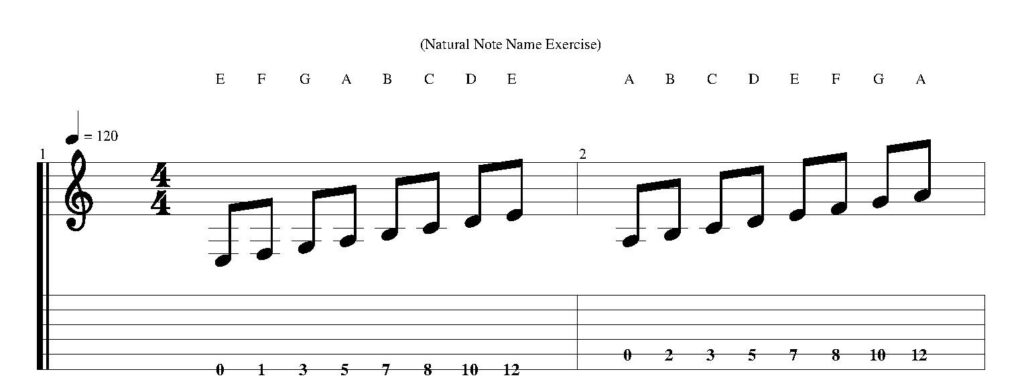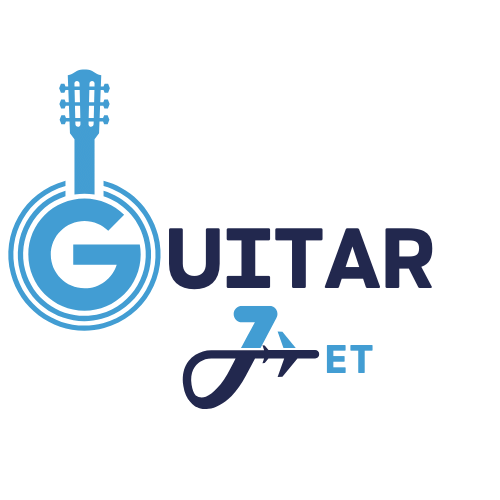Let’s learn how to memorize the guitar fretboard by looking at these easy fretboard memorization hacks.
Make sure you memorize the open string names before you memorize any other notes on the guitar.
Fretboard Memorization Starts with natural notes
Memorize natural notes, and don’t focus on memorizing accidental notes (sharps and flats).
You’ll be able to locate accidental notes with ease if you just memorize the natural notes.
Memorize half the fretboard in 2 minutes

Play the natural notes on your low E string. Say them out loud as you do it:
E-F-G-A-B-C-D-E
Now you need to play the natural notes on your A string. Say them out loud, too:
A-B-C-D-E-F-G-A
Now play the natural notes on your high E string. They’re the same notes you played on the low E string.
If you can get the natural notes memorized on these 3 strings, you’ll have half the fretboard memorized!
Use octaves to find new notes
You can use octaves to identify notes on the D and G strings.
You can find the octave for any note on the low E string and A string by moving down 2 strings and up 2 frets. You can see this and practice this using the exercise below.
Feel free to play the octaves in harmony (together), or one note at a time (alone).

Play Along to backing tracks with different root notes
Backing tracks make it exciting to memorize the notes on the fretboard.
For example, you could search for an “E minor pentatonic backing track”. You could also include a genre, such as “E minor rock backing track”.
Here’s a breakdown of the process:
Start by picking a root note, such as E.
Then, find a backing track by typing in: Root note + scale name + backing track
From here, you’ll use a scale that works with the type of backing track you chose. In our example, the E minor pentatonic scale would be an easy choice to start with.
This way, you can use scale shapes and diagrams to help you identify root note locations, and you’ll memorize note names and their locations as you practice along to different backing tracks.
The best scales to start with are:
- Minor pentatonic scale
- Major scale (try using 3 notes per string major scale shapes)
- Natural minor scale
Where to go from here
Fretboard memorization will come to you easily as you continue to learn more about guitar theory.
A great next step is learning intervals on your guitar. They’ll help you understand scales, chords, and harmony, which will allow you to make good use of your fretboard knowledge!

